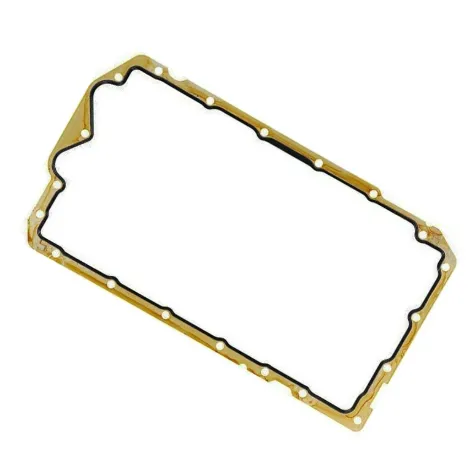The Essential Guide to Oil Drain Plug Washers: Types, Uses, and Replacements
An oil change may seem like a simple task, but the small components involved—like the oil drain plug washer—play a vital role in ensuring a leak-free engine. This often-overlooked part acts as a seal between the oil drain plug and the oil pan, helping prevent oil leaks and maintaining engine integrity. In this article, we’ll explore the function of various types of oil drain washers, including the popular M14 crush washer, and explain why selecting the right oil pan washer is just as important as choosing the correct oil filter or motor oil.

What Is an Oil Drain Plug Washer and Why It Matters
The oil plug washer is a small ring—often made of metal, rubber, or composite material—that sits between the oil drain plug and the oil pan. Its purpose is to provide a tight seal that prevents oil from leaking out after the drain plug is reinstalled.
When you perform an oil change, you typically remove the oil drain plug to let the old oil flow out. Once the oil has drained, you reinstall the plug—but here’s where the oil drain washer comes in. If the washer is old, cracked, deformed, or missing entirely, it may not provide a proper seal. This can lead to slow oil leaks, which may go unnoticed until engine damage occurs due to low oil levels.
Common names for this part include:
Oil drain plug washer
Oil plug washer
Oil pan washer
Oil pan crush washer
Though they all refer to the same essential function, differences in material and fitment do matter.
Types of Oil Drain Washers: Crush, Flat, and Composite
There are several types of oil drain washers on the market, each suited to different vehicle makes and oil pan designs.
Crush Washers (e.g., M14 Crush Washer)
The most widely used type, especially in Asian and European vehicles, is the crush washer. The M14 crush washer is a popular size, often made of soft metals like aluminum or copper. It deforms slightly when tightened to create a secure seal. These are considered single-use, as the material becomes permanently compressed and may not seal correctly if reused.
Key features:
Soft metal construction (copper or aluminum)
Designed to deform and conform to the mating surface
Often used in Honda, Toyota, BMW, and similar makes
Must be replaced at every oil change
Flat Washers
Flat washers are typically made of steel or hardened materials and do not deform like crush washers. They rely on the plug and pan being machined perfectly flat. These are reusable in some cases, but still benefit from occasional replacement.
Composite or Rubber-Coated Washers
Some washers feature a rubber or nylon ring on a metal base. These provide a good seal and can sometimes be reused, although many professionals still recommend replacement during each oil change. They are often used in aftermarket or universal oil drain plug kits.
Replacing an Oil Drain Washer: Best Practices and Tips
While many DIYers and even professionals forget or ignore replacing the oil pan washer, doing so is a best practice that can prevent costly repairs.
When to Replace It
Every oil change (especially if using a crush washer)
If you notice any signs of leakage
If the old washer is visibly flattened, cracked, or corroded
How to Replace an Oil Plug Washer
Drain the engine oil completely.
Remove the old washer from the oil drain plug (it may be stuck or compressed tightly).
Clean the drain plug and inspect for any damage or wear.
Place a new oil drain washer (match the correct size, e.g., M14 crush washer) onto the plug.
Reinstall the plug using the correct torque specification. Over-tightening can strip the threads or damage the washer.
Choosing the Right Washer
Always consult your vehicle’s manual or parts guide for the proper washer size. Common sizes include M12, M14, M16, etc., referring to the plug thread diameter. Using the wrong size can result in improper sealing.
OEM vs. Aftermarket
OEM washers ensure the perfect fit and material compatibility for your vehicle. However, many high-quality aftermarket options are available, often sold in multi-packs for convenience.
Tip: Stock up on a few compatible washers and keep them with your oil change supplies. This simple habit can save you a trip to the store or a messy leak down the road.
Final Thoughts
The oil drain plug washer may be one of the smallest components in your engine system, but it plays a big role in preventing oil leaks and maintaining a properly sealed oil pan. Whether you're using a copper M14 crush washer, a rubberized oil drain washer, or another type, always make sure it's in good condition and properly installed. It’s a minor step in the oil change process—but one that can prevent major headaches later on.
-
Seal 12x20x5: Precision Radial Shaft Seals for Industrial Reliability
خەۋەرلەر Nov.24,2025
-
Seal 12x18x5: Essential Guide to Specifications, Applications & Vendors
خەۋەرلەر Nov.24,2025
-
Understanding Seal 12 20 5: Applications, Specifications & Industry Insights
خەۋەرلەر Nov.23,2025
-
Durable Oil Seal 85x110x12 – Reliable Sealing Solutions for Industry
خەۋەرلەر Nov.23,2025
-
Durable and Precise Oil Seal 75x95x10 for Efficient Machinery | YJM Seal
خەۋەرلەر Nov.22,2025
-
Durable Oil Seal 75x100x10 for Reliable Industrial Performance | YJM Seal
خەۋەرلەر Nov.22,2025
-
High-Quality Oil Seal 65x90x10 | Durable & Reliable Sealing Solutions
خەۋەرلەر Nov.22,2025
مەھسۇلات تۈرلىرى















